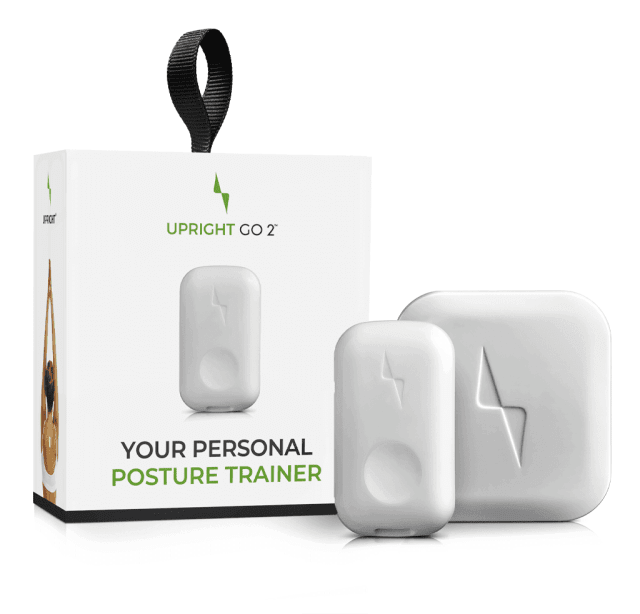The Benefits of Having Perfect Posture
Max Frenkel

In recent times, we have become a generation of slouchers. Excessive use of smartphones, tablets, and computers; increased number of desk jobs; and long commutes to and from work have forced poor habits upon much of today’s workforce. Most people don’t even realize how ingrained their poor posture has become, or how to fix it. Upright is here to help.
Complaints of chronic knee problems and back pain have become the norm. The rise in popularity of chiropractors, massage, yoga classes, physical therapists, and technology such as Upright is a direct result of our lifestyle choices and our less strict standards of carrying our bodies..
What makes good posture?
To fix poor posture, it is important to understand what good posture looks like. Good posture is when your body is fully aligned to best support all weight, motion and functions of internal and external systems. For instance, hunching over your desk or steering wheel can make it hard for your neck to support the weight of your head, making for bad posture. Because perfect posture is not one specific position you must hold still in all day, you can strive to have perfect posture when you are sitting, standing, walking, and even sleeping.
Sitting posture: For optimal sitting posture, start by adjusting the height of your chair so you can comfortably sit with your feet on the ground and your back against the chair. The bottom of your back and hips should be resting on the back of the chair while your upper back sits straight above your hips. Your legs should be bent so your knees are slightly lower in height than your hips, your thighs will probably slope down slightly from your hips to your knees. Keep your legs uncrossed and lay your feet flat on the floor so your legs and feet get even weight distribution. Relax your shoulders back while your head and neck stay in a straight line above your spine. To prevent your posture from getting stiff, you should take a short walking break every 30 minutes or so to get your muscles moving.
Standing posture: To ensure you keep straight posture while standing, keep feet flat on the ground, shoulder width apart. Your hips, shoulders, and neck should all be aligned on top of each other. To keep your head in the proper position, you should hold your chin parallel to the floor. You’ll want to keep your shoulders open and relaxed so you are not hunched over or rounded back. Distribute your weight evenly across the balls and heels of your feet. It is normal to feel like you are leaning slightly forward when you first correct your weight distribution as most people incorrectly keep their weight on their heels. Remember, having straight posture does not mean having a rigid body, so keep a slight bend in your knees.
Walking posture: For good posture while walking you will follow the same posture guidelines for standing, but you will continue to move as you do this. To help stay upright, you can focus on pulling your belly button towards your spine to keep your body center strong and in place.
Sleeping posture: While you can’t control your movement once asleep, you can set yourself up for the best outcomes. When falling asleep you will want to maintain the natural curves of your spine. If lying on your back (the best sleeping position for posture) put a pillow under your knees to keep your body in line. If you sleep on your side, put a pillow between your knees to keep your hips supported and straight. Your knees should be bent and should always be hip level or lower, never bring them up to your chest for sleep. Try to avoid sleeping on your stomach as this causes strain on your spine and neck, but if you must, you can support your spine by keeping a pillow under your lower stomach at the top of your hips.
How to fix bad habits
Knowing the correct positioning for your body isn’t much help if you don’t apply your learning. In order to fix your bad posture habits, you’ll need to apply your learning regularly over time to retrain your body’s resting style. This can take practice, reminders, and peer help.
One way to get on track for fixing your posture habits is to set reminders or alarms on your phone or computer that prompt you to remember posture at specific times throughout the day. You could also create signs to put up around your house that point out your goals. The simple reminder throughout the day can help you to make regular modifications to your current posture.
Beyond personal reminders, you can enroll friends, family members, or coworkers to help. If you let your trusted friends know you would like to improve posture and invite them to point out when they notice you are slouching, you will build randomized reminders and create accountability. If you’d like randomized feedback without including others, you can set up a mirror in your workspace, you may notice your slouching just from looking at your own reflection.
The easiest way to get immediate reminders and feedback is with The Upright Go. This small device attaches to your upper back and senses when your posture is getting out of line, and then discreetly prompts you to make a change in your position. The personalized tool can also help you understand when your body is correctly aligned, so you can be confident you are working towards great posture.
Sometimes it’s hard to break old habits purely because you have trained your muscles to relax with bad posture. You can help to ease your body into better posture by stretching tense muscles and strengthening weak ones. Tight shoulders and weak abdominal muscles can lead to improper support of your alignment. You can always consult a medical professional to know what exercises may be best for you.
Some areas of bad posture come from things that are easy to fix. If your monitor at work is much lower than your eyes, you can get a stand to prop it up to eye level. This will help your head and neck stay straight instead of craning down. You can also add a stool under your feet or a rolled towel or pad at your lower back if you cannot customize a chair but don’t achieve straight posture when sitting.
Proper posture helps reduce wasted energy, chronic body pain, joint dysfunctions, decreased range of motion, and other internal health issues. Posture can help your body breathe better, and with better oxygen flow you can improve muscular, cognitive, and organ functions. Yes, posture really does affect overall health. Starting from the ground up, we can fix how we carry ourselves and lead us to living a healthier, happier life.
You Might also Like
Search
Sign up to our newsletter
Follow Us On
Popular
Revisit the GO 2/S Device Setup
How to get started
Finding your upright position
How to find your target upright posture
Calibration
Check out the UPRIGHT GO 2

